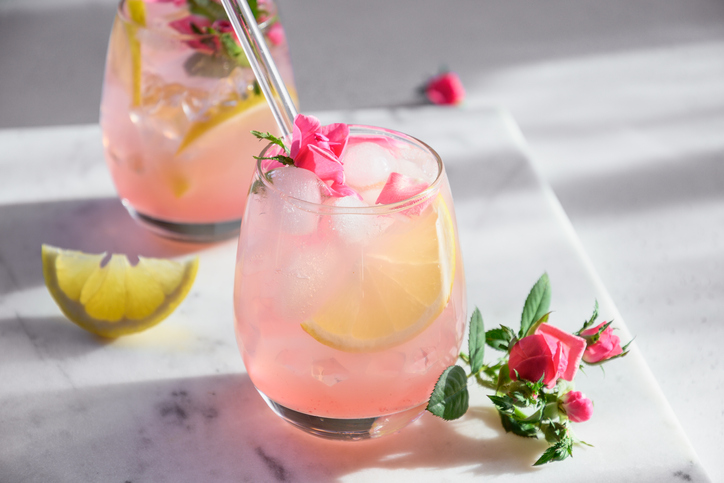 Freshness pink lemonade with rose gin garnish lemon in sunny shadow on white background. Close up.
Freshness pink lemonade with rose gin garnish lemon in sunny shadow on white background. Close up.
By Adam Mogelonsky, Larry Mogelonsky
As restaurateurs and hoteliers, you bear a significant responsibility to ensure the safety of your guests, particularly in preventing drunk driving. The legal ramifications of such incidents are substantial. However, there is encouraging news: alternatives to alcoholic beverages are becoming increasingly available, diverse in quality, and popular among consumers.
Simultaneously, there’s a growing trend of people abstaining from alcohol either entirely or by reducing their consumption frequency per week. Whether motivated by health concerns or other reasons, such patrons often seek options beyond traditional sodas or carbonated water. Mocktails or freshly squeezed juice concoctions offer them a way to enhance their dining experiences. This trend has been amplified by the focus on wellness, wellbeing, and nutrition during the pandemic and is poised to continue its ascent.
In the United States, the alcoholic beverage market boasts a staggering value of approximately one quarter trillion dollars as of 2021. However, the market for alcohol alternatives, including zero-alcohol wine, beer, and spirits, is rapidly growing and estimated at $29 billion, roughly one-tenth the size of the traditional alcoholic beverage market. To provide context, the alcohol alternative market’s value is equivalent to the combined value of all ‘brown’ spirits, such as Bourbon, Irish Whiskey, Scotch, Brandy/Cognac, Canadian and American Rye Whiskey.
To further illustrate the growth of alcohol alternatives, let’s consider some additional statistics. According to market research firm IWSR Drinks Market Analysis, the global market for low- and no-alcohol beverages is expected to grow by 31% between 2018 and 2022, outpacing the overall beverage market. This growth is driven by factors such as increasing health consciousness, changing consumer preferences, and innovations in product offerings.
Spirit alternatives like Seedlip have made a considerable impact in the marketplace. Seedlip, known for its expanding lineup of plant-based liquor substitutes, draws inspiration from distilled non-alcoholic remedies outlined in The Art of Distillation written by John French in 1651. Seedlip’s Grove 42, one of its flagship products, closely mimics the flavors of traditional gin.
In addition to Seedlip, brands like Ritual Zero Proof and Kin Euphorics offer a variety of alcohol alternatives that cater to different tastes and preferences. Ritual Zero Proof specializes in non-alcoholic spirits, offering alternatives to traditional vodka, gin, and whiskey. Kin Euphorics, on the other hand, focuses on creating mood-enhancing beverages using adaptogens and nootropics. Jukes Cordialities produces several wine alternatives made from organic apple cider vinegar and a variety of fruits, vegetables, herbs, spices and flowers. These drinks, devoid of fermentation, offer unique flavors and aromas without the presence of alcohol.
For mixologists and beverage professionals, the emergence of alcohol alternatives presents a unique opportunity to develop innovative and enticing non-alcoholic cocktails. By incorporating these alternatives into their beverage offerings, establishments can cater to a wider range of guests, enhance the overall dining experience, and potentially increase revenue per cover.
Moreover, promoting alcohol alternatives within cocktail lists can provide designated drivers and non-drinkers with appealing options beyond traditional soft drinks, thereby fostering inclusivity and customer satisfaction.
In light of these developments, exploring the various options available in the alcohol alternative market and incorporating them into your beverage program can be a rewarding endeavor. Consider making it a collaborative effort by engaging your bar staff in a contest to determine the final selection of non-alcoholic drinks, fostering creativity, camaraderie, and enthusiasm among your team.
________
This article may not be reproduced without the expressed permission of the authors.


